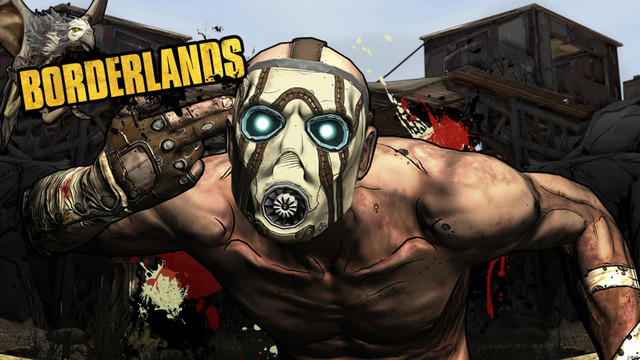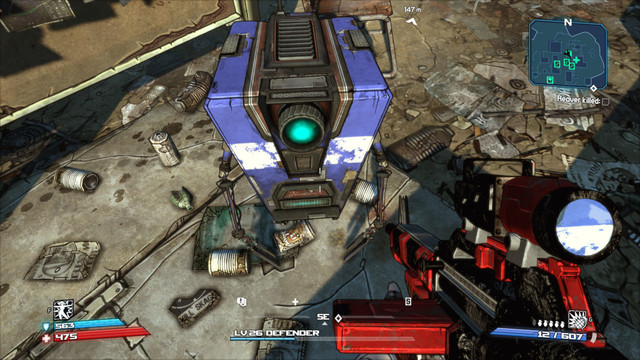Returning to Borderlands (yes, the first one)
As I took my time through Borderlands 3's campaign, I felt the need to re-visit the first installment in the series. It has aged well.

I recently started playing Borderlands 3, despite it not having a native Linux version, or being locked to the Epic Games Store for a few months. I’m having a great time playing it, it’s a fantastic game, no matter what the naysayers think. Its humor is still “like it or hate it”, but it works for me, and the gameplay is refined, smooth, and enjoyable. The villains, while being blasted left and right by reviewers, are actually endearing and menacing, and I I already have logged more than 30 hours, arriving at the very end of my first playthrough as FL4K, the Beastmaster.
But playing Borderlands 3 has made me wonder: how far has the game moved from its roots? Is Borderlands 3 really a much different game than the one that started it all? So I decided to buy “Borderlands - Game of the Year Edition - Enhanced” on Steam, and give it another go.
The game runs perfectly well with Proton on Linux at 1440p, on highest settings, and apart from capping the framerate at 60fps to avoid stuttering, I didn’t have to touch a thing.
Replaying the same game?
I had played Borderlands to completion, as well as all of its DLC, when it first released. Not saying I bought it, but I played it through the magic of “the internet”. I had really enjoyed the experience, sinking all the time I had then into that game, completing every little side quest or challenge (apart from the giant raid boss which I couldn’t beat alone, since online play was… not an option, for the same reason I had to buy the game again to play it anew). I had only played as one character, Roland the Soldier, since by the time I was done on Pandora, I was growing weary of revisiting the same locations.
Afterwards, I also played the second one entirely in co-op with my now-ex wife, and almost all its DLC, and we even tried our hand at the Pre-Sequel, which was utterly disappointing and quickly abandoned.
It’s been ten years since I played the original Borderlands, so how does it stack up today?
The graphics? They’re fine

First, the obvious stuff: the game has aged well. Sure, it doesn’t have the same level of detail that Borderlands 2 or 3 enjoy. Textures are more basic, character models less detailed, and the weapons from a specific category all look about the same. The skyboxes are a lot less interesting, and the world’s geometry is limited (especially around the huge trash piles that form most of Pandora’s terrain), but the Enhanced version applies enough polish to hide that. The cel-shading techniques help make the game look almost current as well. It’s all very dull and brown though, although you can disable this color reduction in the config files (which I did).
I know, the enhanced version is not really the original, but it looks like how I remember the game, so that’s something. You won’t get fancy volumetric lighting, screen space reflexions, or RTX enabled shadows here. The effects, like fire, shock or corrosion are also a lot more simple, and far less impressive. All in all, it looks decent enough, and supports modern resolutions well.
Now, for the less glorious stuff! The gunplay is not great, the characters all feel the same, the endless back and forth slog to grab and turn in quests is tiring, and the story is largely forgettable. And yet, I’m having a fantastic time!
Gunplay and characters: limited in a charming way

Compared to Borderlands 3, the gunplay is…weird. The feeling of the weapons, the sound design, and aiming down sights feels off, like everything is floating. The guns don’t carry much of a sense of weight, apart from the heavier shotguns or rocket launchers. The character’s mobility also is a lot less interesting, without the ability to vault over stuff to add some verticality to the action, and the movement speed feels a lot slower.
This all results in an experience that’s a lot less snappy and a lot more “floaty”. And still, there is a charm to it, a slower-paced experience where you get to really aim, to really experience the combat instead of blazing through enemies. It lends a more “realistic” feel to it, if that word can be applied to such a setting as Borderlands.
The characters are all the same underneath, and that’s because they barely speak, apart from witty one liners when killing an enemy with a particularly devastating shot, and also because skills are a lot less useful in the first Borderlands than they are in the next instalments. The three skill trees provide marginal improvements and changes to your character, and don’t really orient it in a specific direction. I played a Siren this time around, and I don’t feel I’m playing her very differently than I was playing my Soldier back in the day. Advance, shoot, use the skill when you need to deal some damage to multiple enemies, and hide a little bit when you need health or shield. This doesn’t lend itself to much replayability, I feel, since the game won’t really be experienced that differently if you’re playing through it a second time. That’s an area where Borderlands 2 and 3 have really improved a lot.
The long drives make the world feel real

Now the big drawback, which is also the most endearing quality of Borderlands: the constant back and forth between a quest giver (generally a Bounty Board), your destination, and back to the quest giver again. The fast travel stations are few and far between, so you’ll be grabbing a trusty “Catch a Ride” often to traverse the same environments often, running over skags, bandits, or other enemies. And while this might seem repetitive by today’s standards, it also lends a sense of place in the world.
Instead of quickly jumping through disconnected areas, never really knowing where one ends and the other one begins, you get a feel for how the whole world is laid out, and it really makes your character a part of it. Sure, it might feel tedious at first, but once you’re used to it, it all makes sense. It’s the same as playing Morrowind vs Skyrim; the first one made you hunt for your destination without any quest markers, the second made you follow an arrow on your hud. In the end, the world of Morrowind is etched in my mind, probably forever, and I discovered so many little secrets and areas, whereas the world of Skyrim is a blur, with no real sense of discovery.
It’s the same for Borderlands 1 and 3: the first one, I could still remember even after more than 10 years. Some areas had me thinking “Oh yeah, that’s the place where the giant robot dude comes out from”. On the other hand, after playing more than 30 hours of Borderlands 3 in two weeks, I can barely remember the name of any of the locations I visited, or how they connect to each other.
The lack of story lets you create your own

As per the story, it surely is absolutely forgettable in Borderlands. The second had a more intriguing plot, and the third one has at least some stakes going for it. But in the first Borderlands, you play a Vault Hunter, a little better than average bounty hunter that’s in there for the promise of fortune. No one has ever opened a vault before, it seems, and no one knows much about them, so it would seem normal that your missions are more geared towards helping people in the hope that one of them know something useful to your quest.
You’re not here to save the world, you’re here to get rich and murder a bunch of idiots on the way. And in that sense, the relative lack of story is a boon instead of a problem: you get to make your own adventure. Don’t remember why you had to kill Nine Toes, or Sledge? That’s ok, they were just blocking your path to the Vault, your way to glory and fortune.
Other systems, or how you can tell this game has aged
Then, there are the systems that got taken out from the sequels, like the fall damage that could hurt your character (we’re better off without that, I think), or the “help a claptrap to increase your backpack’” quests (very repetitive fetch quests, but they made you look everywhere for that telltale sound of a claptrap moaning, if only to make it stop). The ammo and money from chests and lockers weren’t collected automatically, which is probably my biggest gripe after playing Borderlands 3 and it’s auto ammo pick-up.
The one system I regret, though, is the weapons mastery rank: the more you used a specific type of weapon, the more effective you became with it. It was a nice way to make you feel more proficient over time, even with the same gun you already had. I don’t know why they removed that from the following entries, but I kinda liked it, it made each character feel more personal to how you played them.
In the end, I’m going to go through the first Borderlands again, and its DLC as well. Borderlands 3 is a great improvement over the previous three entries, but it doesn’t make the first one instantly obsolete. In fact, I feel it makes it shine even more: the two are different games, with different gameplay, different pacing, and different objectives.
Help support what I do
If you want to keep this website going, please consider subscribing on Patreon, you will get a bunch of cool advantages in the process, like a weekly podcast and the right to vote on video topics I cover on Youtube!



